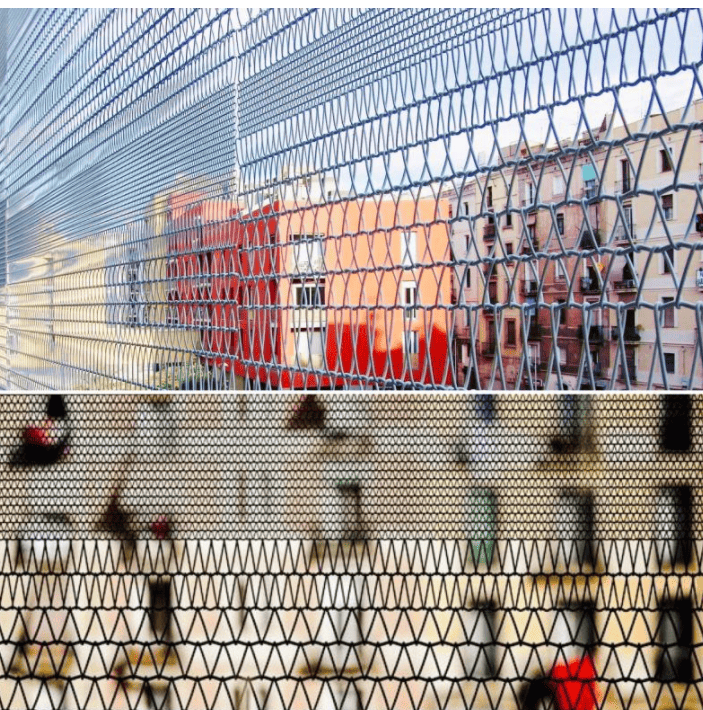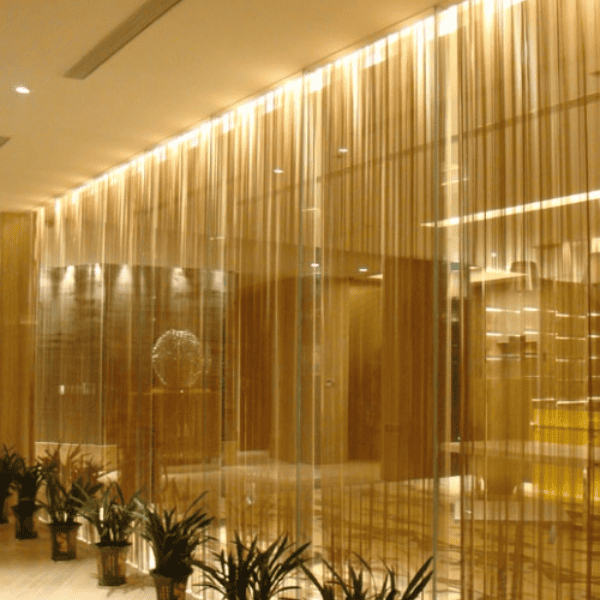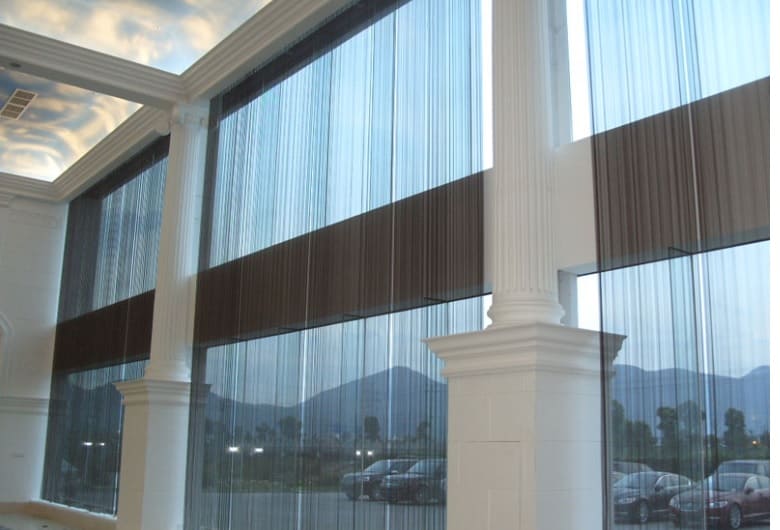
Architectural mesh is a woven wire mesh that is used for a variety of architectural applications, including façade cladding, shading, and space division. This material is made from high-quality stainless steel or other metals and can be customized to meet specific design requirements. In recent years, it has gained popularity in the design community for its unique aesthetic properties and versatile functionality.
One area where architectural mesh particularly excels is in space division. Traditionally, architects and designers have used walls, screens, and other opaque materials to divide spaces within a building. However, these materials can be visually imposing, create a sense of confinement, and restrict natural light flow. Architectural mesh provides an alternative that offers several advantages.

Openness & Connectivity
One of the primary benefits of using architectural mesh for space division is its ability to create a sense of openness and connectivity between different areas of a building. The mesh’s semi-transparent nature allows natural light to flow through it, creating a bright and airy environment that promotes a sense of well-being and productivity. Additionally, the mesh’s woven pattern provides a level of visual interest that traditional walls and screens cannot match, enhancing the overall aesthetic appeal of a space.

Flexibility
Another advantage of using architectural mesh for space division is its flexibility. The material can be shaped, cut, and manipulated to fit virtually any design requirement. This means that designers can use architectural mesh to create unique and customized partitions that are tailored to the specific needs of a space. Whether it’s a curved, angled, or multi-level partition, architectural mesh can be used to achieve the desired effect.

Highly durable and corrosion resistant
Easy to maintain and clean
Fire resistant
Safety
Architectural mesh also offers practical benefits that make it an ideal choice for space division applications. For example, the material is highly durable and resistant to corrosion, making it suitable for use in high-traffic areas. It is also easy to maintain and clean, requiring only periodic dusting or washing to maintain its appearance. Furthermore, architectural mesh is fire-resistant, which enhances the safety of a building.

Installation method
When selecting and installing architectural mesh for space division applications, there are several key considerations to keep in mind. First, it’s important to select a mesh that is appropriate for the specific application. Different meshes have different patterns, weaves, and sizes, and it’s essential to choose one that will meet the design requirements while providing the necessary functionality.
Second, it’s important to consider the installation method. Architectural mesh can be installed in a variety of ways, including tensioned systems, frame-mounted systems, and track-mounted systems. The installation method will depend on the specific application and design requirements, so it’s essential to work with a professional installer who can provide expert advice and guidance.

In conclusion, architectural mesh is a versatile and attractive material that offers several advantages for space division applications. Its ability to create a sense of openness, flexibility, durability, and safety makes it an ideal choice for architects and designers looking to enhance the aesthetics and functionality of a space. By selecting the appropriate mesh and installation method, designers can create visually striking partitions that meet the specific needs of their clients and enhance the overall experience of a building’s occupants.
